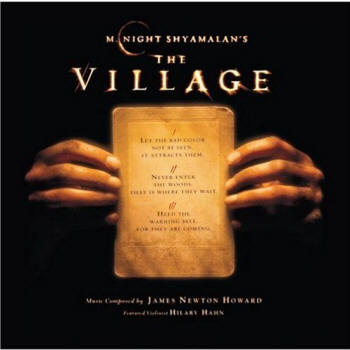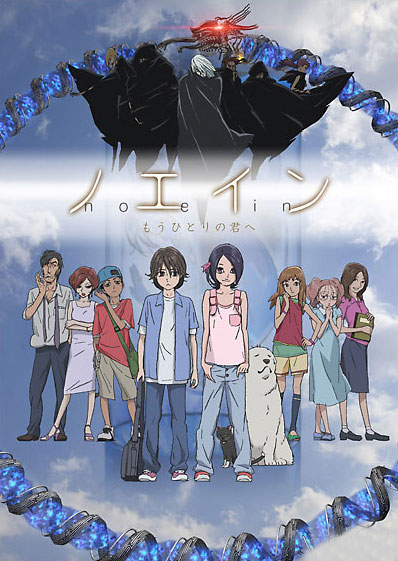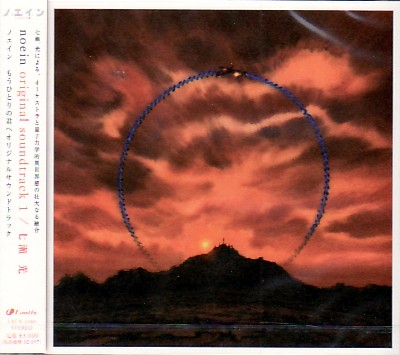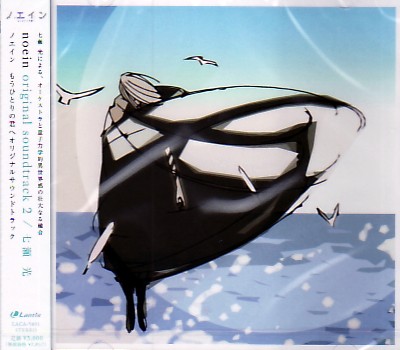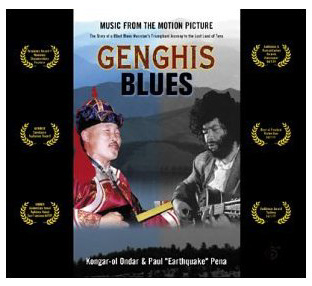|
You are reading the older HTML site Positive Feedback ISSUE september/october 2008
Film Scores on CD
Hollywood Records 2061-62464-2 The Village - James Newton Howard has written a number of film scores for M. Night Shyamalan's movies. The film scores I have heard, such as Unbreakable, Lady in the Water and The Sixth Sense were nice, but not exceptional. Howard's score for Shyamalan's The Village, however, is completely different. This film score contains some of the most beautiful music that I have ever heard. The CD has 42 minutes of music split between 13 tracks. Five of the tracks are themes related to the film's so called monstersódissonant, loud and not particularly noteworthy. The seven of the remaining eight tracks are music for solo violin and various groupings of accompanying instruments including, at times, a full orchestra. Think of Vaughan Williams' The Lark Ascending where the solo violin plays high above the orchestra soaring, swooping, and diving on wings of sound. In The Village the solo violin music is peaceful, subdued. It is dark, somber and melancholy. However, the solo violin still soars high above the orchestra. I have played the solo violin music for a number of friends. Each has thought the music to be incredibly beautiful. When I ask them why they thought the music is so beautiful they can't really quantify it. It just is. My guess is that Howard has written a great melody with some outstanding variations. In addition, the music is played with great sensitivity and emotion. The orchestra used in the recording is the Hollywood Studio Symphony. The Hollywood Studio Symphony is a group of session musicians handpicked for this recording. Los Angeles has some of the greatest session musicians in the world. However, they have been recording very few film scores of late. The hourly rates for a musician for a film score recording session was $140 per hour. Rates for comparable musicians in London were only $95 per hour and in Prague $25 per hour and no royalty fees. Thus, in the late 1990s and early 2000s no film scores were recorded in Los Angeles. The Musician's Union believing that 50% of something was better than 100% of nothing lowered the hourly rates from $140 to $70. The score for The Village, recorded in 2004, was one of the first film scores to be recorded in Los Angeles after this rate reduction. It is nice to have these world class musicians once again doing film scores. Even more important than the orchestra to the impact of this music is the solo violin. The violin soloist makes or breaks this music. Realizing how critical the solo violinist was the producers hired one of the finest concert violinists in the world - Hilary Hahn. I have been a big fan of Ms. Hahn since I heard her in concert performing Meyer's Violin Concerto. Since then I have acquired most of her recordings (her Barber Violin Concerto is still my favorite). There don't appear to be any passages of extreme technical difficulty in the solo violin part in The Village. So the music does not utilize Ms. Hahn's technical brilliance. What it does use is her wonderful tone and her ability to convey emotion. You can hear samples of the music on Amazon.com. The music is well recorded. Enjoy.
Noein: To Your Other Self - Noein is a 24 episode sci-fi anime. It was broadcast on Japanese TV in 2005. An English dubbed version appeared on the Sci-Fi channel in the USA in 2007. While not as well known as other sci-fi anime such as Neon Genesis Evangelion or Ghost in the Shell, Noein has been written about fairly extensively on anime sites and blogs. If you read the reviews and blogs, including the ones on Netflix, everyone talks about the great plot, the likeable characters, and the gorgeous graphics. Most reviews also speak of the music in glowing terms. The music was written by Hikaru Nanase which is a pseudonym for Masumi Ito. Ms. Ito has written film scores for over 30 anime series, OVA (original video anime aka direct to DVD) and movies. Noein is considered her best score to date. The record companies must also like the film score as 3 CDs of the music from Noein have been released. The CDs are Noein: The Soundtrack Volumes I and II which contain the instrumental music from the series, plus the short versions of the songs that accompany the opening and closing credits. The third CD, called Noein, contains the full version of the two vocal tracks plus some instrumental variations on the songs.
The Noein episodes, after eliminating the commercial breaks and the opening and ending credits, are each 20 minutes long. This means the entire series is 8 hours long. With that long a running time the film contains numerous subplots in addition to the sci-fi main plot. With the multitude of subplots the film score can't be just variations on one theme. Instead, the music covers a kaleidoscope of different themes, styles and textures. Of the 43 tracks on volumes I and II, you have some bombastic ones with full chorus and orchestra. You also have an Irish jig, several Elizabethan dances with recorder, a few waltzes and one German dance. One track reminds me very much in style and sound of the Kronos Quartet's Strange Angel. Some of the tracks have a mid-eastern influence while others have a Celtic flavor. The instrumentation on the tracks also has a wide range. One track has just a quiet solo piano; another just a solo harp. One track has pizzicato strings and a clarinet playing a lilting dance. Another track is essentially a drum solo with a synthesizer providing continuo. Another track is just a mandolin, a piano and a synthesizer while another is a cello and piano variation on one of the boisterous themes with full chorus and orchestra. With this wide variation there should be something to please everyone. While it may be hard to imagine such a smorgasbord of music all fitting into one movie, it really does. After playing the two soundtrack CDs numerous times I went back and rewatched the entire series noting where the different tracks fit into the film. It all made logical sense.(1) Ms. Ito is a creative genius as well as a gifted composer. If you want to hear pieces of the soundtrack before buying, your choices are limited as Volumes I and II are not sold in the USA, only in Japan. However, if you do a search on YouTube for "noein" there are a couple of videos that have tracks from the CDs. Beware of the videos that have Noein visuals, but music not from the soundtrack. There are also numerous sites that sell MP3s of the tracks from both CDs for immediate downloading. Another option, if you belong to Netflix, is to watch an episode or two using Netflix's instant download feature. If you decide to buy Volume I and/or II they are obtainable from a few English language websites in Japan. The CDs have a retail list price of 3000 Yen each. Thus, the CDs will cost approximately US$30 each, including shipping. For a guy like me who usually buys his CDs used off of the web, paying US$30 each for two CDs was painful. However, considering the immense enjoyment I have received from repeatedly listening to these two CDs I consider the US$60 to be money well spent. While I consider owning both Volumes I and II essential, do you need to buy both CDs? And if you buy only one CD which should it be? These are hard questions to answer. There is very little duplication between the music on the two CDs. Five of the tracks on Volume II are variations of themes from tracks on Volume I. However, the variations are very different from the originals so I don't mind hearing the themes in another form. Volume I has 23 tracks with an average playing time of 1:56. Volume II has 20 tracks with an average playing time of 2:08 so not much difference in playing time. The two most popular tracks on the CDs per comments on the web are the first track on Volume I which is the boisterous Shangri-la theme for chorus and full orchestra and the 19th track on Volume II which is the song from the opening credits. Since I don't think there is a boring track on either CD I don't think you can go wrong with either. However, I have a slight preference for Volume I. The music is well recorded except on the tracks utilizing the chorus (The Tokyo Philharmonic Chorus) at full volume. It is difficult to record a large chorus and orchestra together and do justice to both. I would give the recordings with the chorus a B+, which is better than most film soundtracks. High recommended music and the film is pretty good to.
Volume I Lantis LACA-5460
Volume II Lantis LACA-5491 Genghis Blues - In 1999, a CD appeared in the stores called Back Tuva Future. This CD made a small stir in the music world due to the novelty of its music which was Tuva, aka Mongolian throat singing. In Mongolian throat singing the singer tightens various muscles in his throat to cancel out certain frequencies of the signing voice. This allows the singer to produce three clear distinct tones simultaneously; i.e. the singer can sing three notes at the same time, one drone and the other two variable. On the CD were ten tracks of the singing of Kongar-ol Ondar, arguably the worlds greatest living throat singer. The songs, instead of being traditional Mongolian songs recorded with traditional Mongolian instruments in Mongolia, were instead recorded in a Nashville, Tennessee recording studio with bluegrass music as the accompaniment. Ondar had previously recorded with Frank Zappa, Mickey Hart, and the Kronos Quartet. The results of this new recording were magical and the CD sold surprising well for such different music. In 2000, a documentary film appeared called Genghis Blues. The documentary chronicled the journey in 1995 of a blind American blues singer named Paul Pena to Mongolia to meet with Ondar and to sing in the annual world throat singing championships. Mr. Pena, who had learned to sing Tuva by listening to Russian broadcasts of Tuva on his shortwave radio, won first place in the kargyraa division. Kargyraa is one of the three different styles of Tuva. On the Genghis Blues soundtrack are 17 songs sung by Mr. Pena, by Ondar or both. The music is for the most part traditional Mongolian songs played in a blues style, though there is a traditional blues song (in the style of John Lee Hooker) sung in Tuva. This CD is very different and very good, if you like the blues. Both CDs are worth listening to, not only for the novelty, but because the music is worth listening to. I am not aware of where you can listen to samples of either of these CDs. However, you can buy them both used off the web for about $7 each. If you want to hear something fun and different, give these CDs a try.
Back Tuva Future Warner Bros. 9 47131-2 (be sure to listen to the hidden 12th track). Genghis Blues Six Degrees Records 65706 1038-2 (1) The Noein story is based in the Japanese port city of Hakodate on the northern island of Hokkaido. The animators took great care to make the film city of Hakodate, its buildings, and environs look exactly like the actual city, buildings, and surroundings. Hakodate was one of the three Japanese ports opened to the West in 1858 due to Commodore Perry's gunboat diplomacy. Numerous European style buildings were built in Hakodate following that opening. Since Hakodate suffered minimal damage in WWII these European structures survived and are used as the backdrop of many scenes in the film. Thus, the Orthodox Church with the onion domes that is seen numerous times in the film is the actual Orthodox Church that was built in Hakodate in 1861 and still stands today. So the use of European music forms in the film blends very nicely with the many western style buildings depicted in the film.
|

